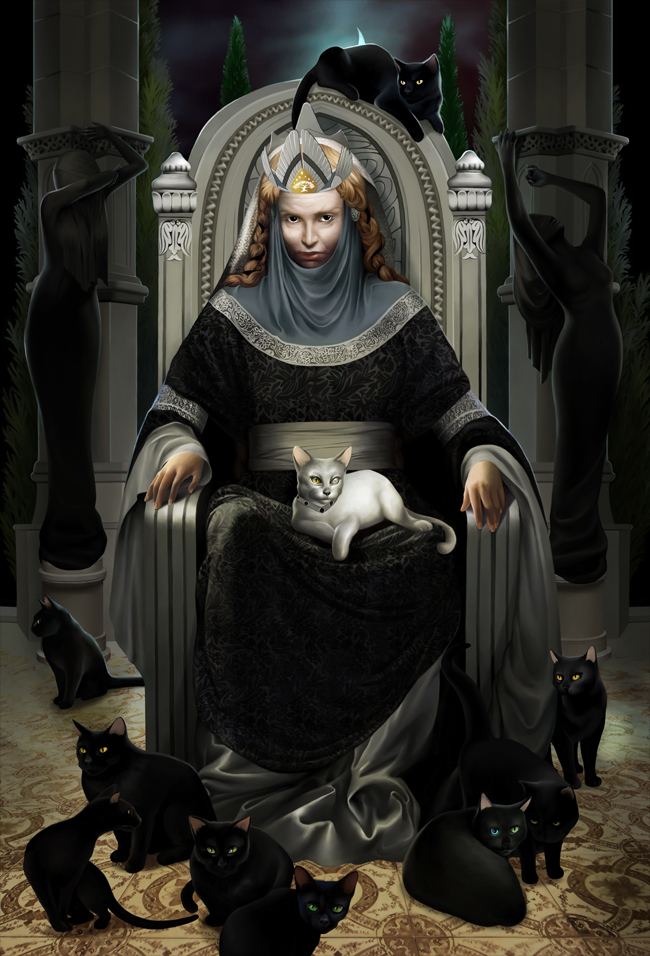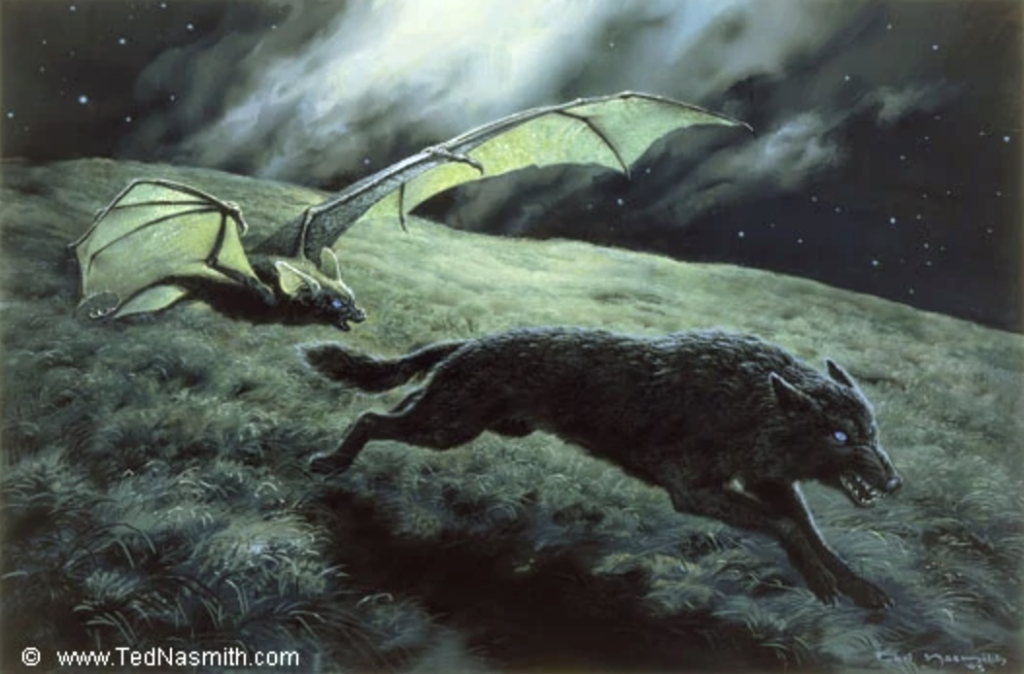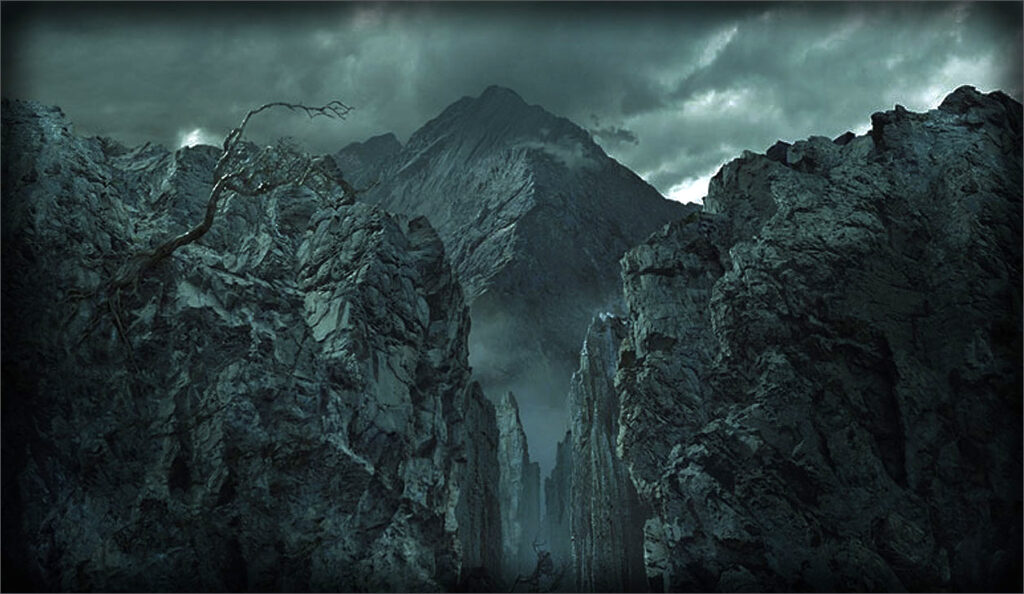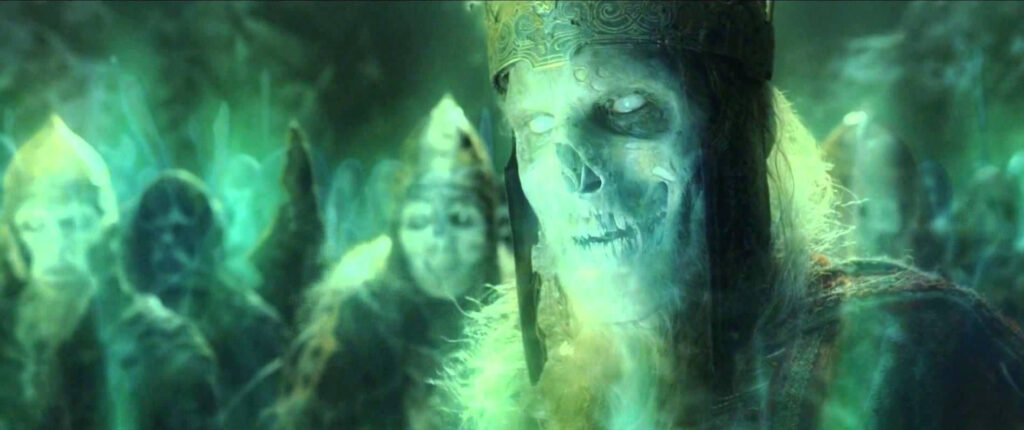Witches and werewolves and vampires, oh, my! J.R.R. Tolkien was not one to shy away from creatures of the night. Just the opposite–he seemed to relish writing horror stories.
When we think of “The Hobbit” and “The Lord of the Rings”, Elves, Wizards, Hobbits, and quests come first to mind. But the Professor’s long quest to create an encompassing mythology for Britain led him to conjure stories within stories. Middle-earth feels real because Tolkien fleshed out its history in-depth. Though they are often only hinted at in the main stories, Tolkien wrote many of these historical references in detail.
In honor of the best holiday of the year (subjectively), let’s explore a few tales of terror written by Tolkien fit for All Hallows’ Eve. These are by no means the only ones. The Silmarillion is filled with stories that invoke a sense of horror in us, such as the story of Húrin and his family. Just thinking about Frodo and Sam’s encounter with Shelob in her lair is enough to make skin crawl. Dig deep, and you’ll find bones aplenty in Tolkien’s work.
QUEEN BERÚTHIEL
While the Fellowship is travelling through Moria, Aragorn mentions that Gandalf is “surer of finding the way home in a blind night than the cats of Queen Berúthiel.”

This is all the reference we get to Berúthiel in The Lord of the Rings, yet the lady was a Queen of Gondor. She was a Black Númenórean – a descendant of Númenor living in the lands to the south of Gondor with allegiance to Sauron. She married King Tarannon Falastur, the “Ship-king” and the 12th king of Gondor. He was pretty much obsessed with sailing; ironically, Berúthiel hated the ocean. Perhaps explaining why she turned to evil ways. If political aims were the reason they married, it seems to have backfired. She spent her life spying on the people of Gondor, potentially using the information she gathered as a means of blackmail.
“She had nine black cats and one white…setting them to discover all the dark secrets of Gondor”
Here’s the chilling way Tolkien describes her: “She hated all making, all colors and elaborate adornment, wearing only black and silver and living in bare chambers, and the gardens of the house in Osgiliath were filled with tormented sculptures beneath cypresses and yews. She had nine black cats and one white, her slaves, with whom she conversed, or read their memories, setting them to discover all the dark secrets of Gondor, so that she knew those things ‘that men wish most to keep hidden,’ setting the white cat to spy upon the black, and tormenting them. No man in Gondor dared touch them; all were afraid of them, and cursed when they saw them pass.”
Eventually, the King exiled her. He put her and her cats on a ship that was last seen sailing past Umbar. (This always left me with a feeling of unfinished business. Or the image of a ghost ship filled with snarling cats.) Berúthiel’s name was removed from the Books of the Kings but not from memory. Aragorn’s mention of Berúthiel is made 2,000 years after her disappearance.
BEREN and LÚTHIEN
On the surface, Beren and Lúthien is a story about star-crossed lovers. It is a story of love and fealty, but it is also a horror story.

To receive Lúthien’s father King Thingol’s blessing to wed, the couple must go to Angband and steal a Silmaril (a legendary gem containing the original light of the world) from the crown of the Morgoth–tall as a mountain, a gaze that would turn your soul to ice, the master of all evil in the world. To conceal their identities, Beren and Lúthien disguise themselves as two Maiar who had been turned to the dark side. In service to Morgoth and Sauron, these Maiar took the form of a werewolf and a vampire bat. Drauglin was the sire of all Werewolves, an abomination bred by Morgoth and inhabited by an evil spirit. Thuringwethil took the shape of a vampire bat with great fingered wings barbed at each joint’s end with iron claws.
‘Thuringwethil I am, who cast
a shadow o’er the face aghast
of the sallow moon in the doomed land
of shivering Beleriand.’
― Lúthien in her disguise, from Lay of Leithian, Canto XIII
These creatures were slain by Huan the hound to protect Luthien, thus enabling her to use their hides as disguises:
“By…the arts of Lúthien, [Beren] was arrayed now in the [ghastly wolf-hame of Draugluin], and she in the winged [bat-]fell of Thuringwethil. Beren became in all things like a werewolf to look upon, save that in his eyes there shone a spirit grim indeed but clean; and horror was in his glance as he saw upon his flank a bat-like creature clinging with creased wings. Then howling under the moon he leaped down the hill, and the bat wheeled and flittered above him….Clad in these dreadful garments [they] ran…and all things fled before them.”
There is also a description in “Beren and Lúthien” of Sauron as vampire. He battles with Lúthien for control of his tower, then “[H]e took the form of a vampire, great as a dark cloud across the moon, and he fled, dripping blood from his throat upon the trees, and came to Tar-nu-Fuin, and dwelt there, filling it with horror.”
THE PATHS OF THE DEAD
A more familiar example of Tolkien’s horror writing can be found in The Lord of the Rings.

It, too, is part of larger historical story involving an oath broken by the Men of the Mountains and a curse issued upon them by Isildur. It is a terrifying ghost story that takes us through The Paths of the Dead.
Rest never until your oath is fulfilled
–Isildur’s Curse
The reader follows Aragorn into the eerie Dimholt, “under the gloom of black trees that not even Legolas could long endure.” Gimli’s blood runs chill when they reach the Dark Door that “gaped before them like the mouth of night…fear flowed from it like a grey vapour.” An even heavier dread falls upon the company in the pitch-dark tunnel where the whisper of unintelligible voices surrounds them. They cannot turn back no matter how terrified they are for “an unseen host…followed in the dark.”
Then there comes a story-within-story. The company finds the skeletal remains of a warrior, clad in mail with gilded hauberk and a rich belt, a notched sword at his side. “[H]is finger bones were still clawing at the cracks” of a closed door. We never learn why he was so desperate to get through that door, but the thought of a failed attempt to escape doom hangs ever-present in the gloom.

Yet this encounter is nothing to the terror felt not only by the company but by every person in the villages they pass through once Aragorn summons the King and Army of the Dead. “Lights went out in houses and hamlet as they came, and doors were shut, and folk that were afield cried in terror and ran wild like hunted deer.”
You can imagine that this cautionary tale might be told generation after generation, when the days grew short, the moon hanging enormous and orange against the night sky, bonfires blazing to keep the ghosts and goblins at bay while the darkness pressed in on all sides…Muahahaha.
HAPPY HALLOWEEN!
Note: Quoted material was written by J.R.R. Tolkien and can be found in Unfinished Tales of Númenor and Middle-earth, The Silmarillion, or The Lord of the Rings.


